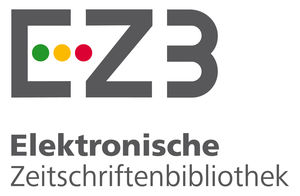O jogo de xadrez e o estudante: uma relação que pode dar certo na resolução de problemas Matemáticos
Résumé
Este estudo tem como objetivo fazer um diagnóstico acerca do possível efeito que a prática de jogar xadrez pode ter sobre o desempenho dos alunos do 8º e 9º anos do Ensino Fundamental em Matemática. Mais claramente, pretendemos investigar a relação de causa e efeito entre a prática do xadrez e a habilidade de resolver problemas matemáticos. Como objetivo específico, propomos ainda investigar: a) as estratégias que o aluno que joga xadrez utiliza ao resolver problemas e se essas estratégias se diferenciam dos alunos que não jogam xadrez; b) o quanto das estratégias do jogo de xadrez aparece na resolução Matemática das questões. No âmbito das estratégias, buscamos observar como o aluno enxadrista se desenvolve, expressa-se, articula-se e, ainda, como registra os procedimentos matemáticos em cada questão proposta. A nossa fundamentação teórica se aporta no estudo do jogo e sua classificação no desenvolvimento do individuo na visão de Piaget, e compartilhando dessa mesma teoria traremos a perspectiva construtivista do jogo no ambiente escolar na ótica de Lino de Macedo. A metodologia compreende num estudo descritivo e o instrumento diagnóstico é um teste contendo oito problemas matemáticos, baseados nos quatro eixos dos conteúdos, que foram selecionados da Olimpíada Brasileira de Matemática das Escolas Públicas – OBMEP de 2005 a 2010 e do Projeto Ensinar e Aprender (2001). Participaram da nossa pesquisa 22 alunos, formando dois grupos de 11 alunos cada: o grupo de alunos que jogava xadrez (Gjx), há mais de um ano nas Atividades Curriculares Desportivas e o grupo de alunos que não jogavam xadrez (Gnx). Desses 11 alunos, tanto Gjx como Gnx, estavam selecionados em 5 alunos de 9º ano e 6 alunos de 8º ano, todos pertencentes à mesma escola. Os resultados do estudo foram investigados sob duas análises: a quantitativa, realizada na comparação entre os grupos e a qualitativa, realizada na interpretação das estratégias de resolução utilizadas pelos dois grupos, e assim, verificar se essas estratégias se diferem. Após as análises dos resultados concluímos que existem fortes indicativos que o jogo de xadrez, em nosso universo de estudo, contribuiu para a resolução dos problemas matemáticos dos alunos, ou seja, as estratégias dos alunos enxadristas, nesse caso, foram mais eficientes que as estratégias dos alunos que não jogam xadrez.
Palavras-chave: Jogo de Xadrez, Educação Matemática, Resolução de Problema, Ensino Fundamental.
ABSTRACT
This study aims to do a diagnostic about the possible effect that the practice of chess can have on the performance in Math of students from 8º and 9º year of Fundamental Level. More clearly, we intent to investigate the relation of cause and effect among the practice of chess and the ability of solving mathematics problems. As specific goal, we suggest yet to investigate: a) the strategies which students who play chess use to solve the problems and if these strategies differentiate themselves of those which students who don’t play chess; b) how much from the chess’ strategies appear in the mathematic solution of questions. What concerns about the strategies, we try to observe how a student who is a chess player develops, expresses himself, articulates and, also, how he registers mathematics procedures in every proposed question. Our theoretical fundamentation grounds on the study of play in the development of individual on the vision of Piaget and his classification for the term "play" and sharing that same theory, we will bring the constructivist perspective of play in the scholar environment on the optic of Lino de Macedo. The methodology is a descriptive study and the diagnostic tool is a test with eight mathematics problems, which are based on the four axis of contents, that were selected from Brazilian Mathematic Olympiad of Public Schools (BMOPS) – from 2005 to 2010 and from the "Teach and Learn Project" (2001). It was part of our research 22 students, whom formed two groups of 11 students: the group of students who plays chess (Gpc), they play chess more than a year in the Sportive Curricular Activities and the group of students who doesn’t play chess (Gnc).From those 11 students, as from the Gpc as from the Gnc were selected 5 students from 9º year and 6 students from 8º year, all of them study at the same school. The study’s results were investigated under two analysis: the quantitative, that were realized in the comparison between both groups and the qualitative, that were realized in the interpretation of the solution’s strategies used for both groups, and then, verify whether these strategies differ or not. After the results’ analysis we conclude that exit strong indicatives that the chess play, in our study’s universe, contributes to the solution of mathematics problems, that is, the chess player students’ strategies, in this case, were more efficient than those from the students who don’t play chess.
Keywords: Chess play, Mathematic Education, Problem solving, Fundamental Level.
http://www4.pucsp.br/pos/edmat/ma/dissertacao/anne_carine_lopes.pdf
Téléchargements
Publiée
Comment citer
Numéro
Rubrique
Licence
Autores que publicam nesta revista concordam com os seguintes termos:- Autores mantém os direitos autorais e concedem à revista o direito de primeira publicação, com o trabalho simultaneamente licenciado sob a Licença Creative Commons Attribution que permite o compartilhamento do trabalho com reconhecimento da autoria e publicação inicial nesta revista.
- Autores têm autorização para assumir contratos adicionais separadamente, para distribuição não-exclusiva da versão do trabalho publicada nesta revista (ex.: publicar em repositório institucional ou como capítulo de livro), com reconhecimento de autoria e publicação inicial nesta revista.
- Autores têm permissão e são estimulados a publicar e distribuir seu trabalho online (ex.: em repositórios institucionais ou na sua página pessoal) a qualquer ponto antes ou durante o processo editorial, já que isso pode gerar alterações produtivas, bem como aumentar o impacto e a citação do trabalho publicado (Veja O Efeito do Acesso Livre).













